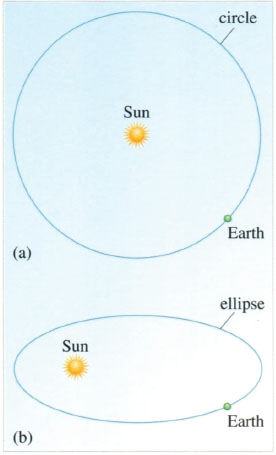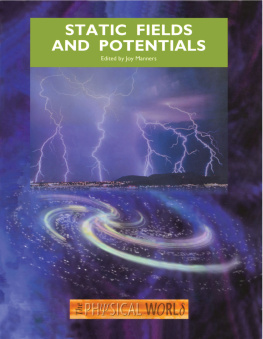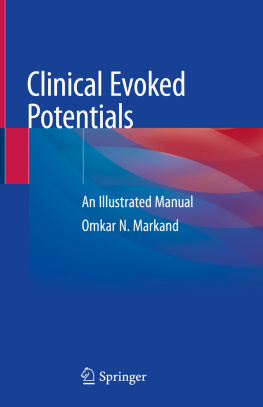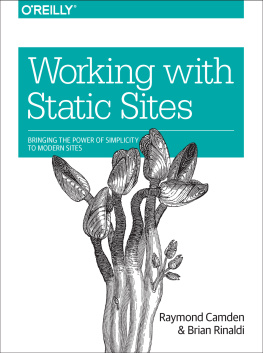Joy Manners - Static Fields and Potentials
Here you can read online Joy Manners - Static Fields and Potentials full text of the book (entire story) in english for free. Download pdf and epub, get meaning, cover and reviews about this ebook. year: 2021, publisher: CRC Press, genre: Children. Description of the work, (preface) as well as reviews are available. Best literature library LitArk.com created for fans of good reading and offers a wide selection of genres:
Romance novel
Science fiction
Adventure
Detective
Science
History
Home and family
Prose
Art
Politics
Computer
Non-fiction
Religion
Business
Children
Humor
Choose a favorite category and find really read worthwhile books. Enjoy immersion in the world of imagination, feel the emotions of the characters or learn something new for yourself, make an fascinating discovery.
- Book:Static Fields and Potentials
- Author:
- Publisher:CRC Press
- Genre:
- Year:2021
- Rating:5 / 5
- Favourites:Add to favourites
- Your mark:
- 100
- 1
- 2
- 3
- 4
- 5
Static Fields and Potentials: summary, description and annotation
We offer to read an annotation, description, summary or preface (depends on what the author of the book "Static Fields and Potentials" wrote himself). If you haven't found the necessary information about the book — write in the comments, we will try to find it.
Static Fields and Potentials — read online for free the complete book (whole text) full work
Below is the text of the book, divided by pages. System saving the place of the last page read, allows you to conveniently read the book "Static Fields and Potentials" online for free, without having to search again every time where you left off. Put a bookmark, and you can go to the page where you finished reading at any time.
Font size:
Interval:
Bookmark:


Edited by Joy Manners

| Course Team Chair | Robert Lambourne |
|---|---|
| Academic Editors | John Bolton, Alan Durrant, Robert Lambourne, Joy Manners, Andrew Norton |
| Authors | David Broadhurst, Derek Capper, Dan Dubin, Tony Evans, Ian Halliday, Carole Haswell, Keith Higgins, Keith Hodgkinson, Mark Jones, Sally Jordan, Ray Mackintosh, David Martin, John Perring, Michael de Podesta, Sean Ryan, Ian Saunders, Richard Skelding, Tony Sudbery, Stan Zochowski |
| Consultants | Alan Cayless, Melvyn Davies, Graham Farmelo, Stuart Freake, Gloria Medina, Kerry Parker, Alice Peasgood, Graham Read, Russell Stannard, Chris Wigglesworth |
| Course Managers | Gillian Knight, Michael Watkins |
| Course Secretaries | Tracey Moore, Tracey Woodcraft |
| BBC | Deborah Cohen, Tessa Coombs, Steve Evanson, Lisa Hinton, Michael Peet, Jane Roberts |
| Editors | Gerry Bearman, Rebecca Graham, Ian Nuttall, Peter Twomey |
| Graphic Designers | Javid Ahmad, Mandy Anton, Steve Best, Sue Dobson, Sarah Hofton, Pam Owen, Andy Whitehead |
| Centre for Educational Software staff | Geoff Austin, Andrew Bertie, Canan Blake, Jane Bromley, Philip Butcher, Chris Denham, Nicky Heath, Will Rawes, Jon Rosewell, Andy Sutton, Fiona Thomson, Rufus Wondre |
| Course Assessor | Roger Blin-Stoyle |
| Picture Researcher | Lydia K. Eaton |
The Course Team wishes to thank Carole Haswell, Michael de Podesta, Keith Higgins and Steve Swithenby for their contributions to this book. The book made use of material originally prepared for the S271 Course Team by Joy Manners, Keith Meek and Shelagh Ross. The multimedia package Forces, fields and potentials was written by Joy Manners and programmed by Fiona Thomson.
First published 2000 by Institute of Physics Publishing
Published 2019 by Routledge
2 Park Square, Milton Park, Abingdon, Oxon 0X14 4RN
52 Vanderbilt Avenue, New York, NY 10017
Routledge is an imprint of the Taylor & Francis Group, an informa business
First issued in paperback 2021
Copyright 2000 by The Open University
All rights reserved. No part of this book may be reprinted or reproduced or utilised in any form or by any electronic, mechanical, or other means, now known or hereafter invented, including photocopying and recording, or in any information storage or retrieval system, without permission in writing from the publishers.
Notice: Product or corporate names may be trademarks or registered trademarks, and are used only for identification and explanation without intent to infringe.
ISBN: 978-0-7503-0718-5 (hbk)
ISBN: 978-1-138-42991-8 (pbk)
DOI: 10.4324/9780429187797
DOI: 10.4324/9780429187797-1
In the earlier books of The Physical World you have learnt a great deal about motion: how to describe motion and how to predict it. You have encountered some of the forces that influence motion and what the result of that influence is. In this book you will meet an entirely new interaction, namely the electromagnetic interaction. As the name suggests, electric and magnetic effects are intertwined at a fundamental level, and you will discover the nature of that interdependence in .
To start with, however, we look at the electrostatic interaction between charged particles and draw many comparisons with the gravitational interaction between masses, with which you already have some familiarity. This is the subject of . Here you will learn how gravitational and electrostatic influences can be described in terms of fields.
further explores gravity and electrostatics, building on the field concept by introducing gravitational and electric potential, and the interrelationships between field, force, potential and potential energy.
In we are concerned with electric currents: the movement of free charges in response to electrical influences. In the modern world we are totally dependent on devices that operate using electric currents, usually in metal wires or circuits. The basic rules applying to simple circuits are explored here.
reveals the magnetic effects created and experienced by moving charges and the variety of ways in which these effects manifest themselves in the real world, for example as permanent magnets.
Open University students should be aware that the video for this book (Magnetic fields in space) is associated with . There is a prompt to view it at the end of that chapter.
DOI: 10.4324/9780429187797-2
On what do we base our scientific theories? When we look up into the sky, how have we learned what we know about the motion of the planets? The understanding of the phenomena of the physical world usually follows from observation and successive attempts at explanation, frequently spread over a period of time and with many setbacks on the way. A very interesting example of this is the explanation of the motion of the planets.
The movement of celestial bodies had, of course, been noted over thousands of years, the planets being distinguished mainly by their relatively rapid motion in the night sky. In fact, the word planet is derived from the Greek word for wanderer. This motion is illustrated in . In the ancient world, the Earth was accepted as the centre of the Universe, and the model proposed by the Greek astronomer Claudius Ptolemy in the second century AD was the accepted theory for the next 14 centuries. However, in 1543, the Polish astronomer Nicolaus Copernicus (1473-1543) proposed that the Earth executed a circular orbit centred on the Sun a heliocentric model replacing a geocentric model. This now relegated the Earth to the same status as the other planets, which were also held to be orbiting about the Sun. This hypothesis was most certainly not welcomed and was subjected both to ridicule and suppression. This is not uncommon with the breaking of totally new theoretical ground.
 The night sky, showing the track of the Planet Mars over a period of about nine months.
The night sky, showing the track of the Planet Mars over a period of about nine months. (a) The Copernican circular motion of the Earth, (b) The Keplerian elliptical motion of the Earth. (Neither diagram to scale.)
(a) The Copernican circular motion of the Earth, (b) The Keplerian elliptical motion of the Earth. (Neither diagram to scale.) The next stage in the story arose from accurate measurement (accurate, of course, in the context of that era). Over a period of more than 30 years, using a sextant and compass, the Danish astronomer Tycho Brahe (1546-1601) made accurate measurements of all the astronomical objects he could see with the naked eye in the night sky (the telescope had not been invented). His successor, the German astronomer Johannes Kepler (1571-1630), analysed Tycho's measurements and, after laborious calculations extending over about fifteen years, discovered that the observations, initially for Mars but later for the other known planets, could be explained by a heliocentric motion that followed three laws. The first of these empirical laws required the motion to be not circular but elliptical, with the Sun at one focus of the ellipse (see ).
Next pageFont size:
Interval:
Bookmark:
Similar books «Static Fields and Potentials»
Look at similar books to Static Fields and Potentials. We have selected literature similar in name and meaning in the hope of providing readers with more options to find new, interesting, not yet read works.
Discussion, reviews of the book Static Fields and Potentials and just readers' own opinions. Leave your comments, write what you think about the work, its meaning or the main characters. Specify what exactly you liked and what you didn't like, and why you think so.











